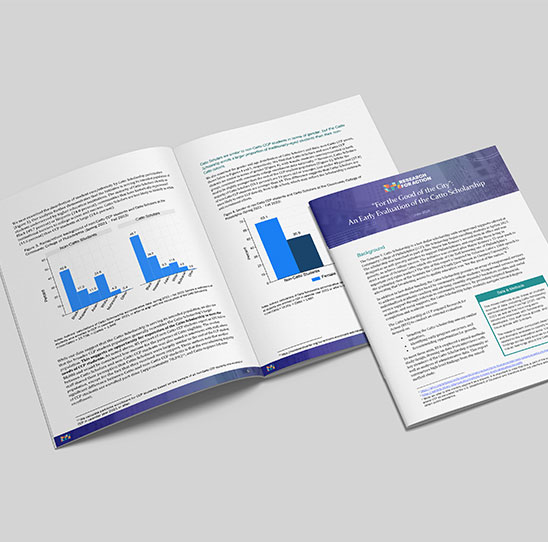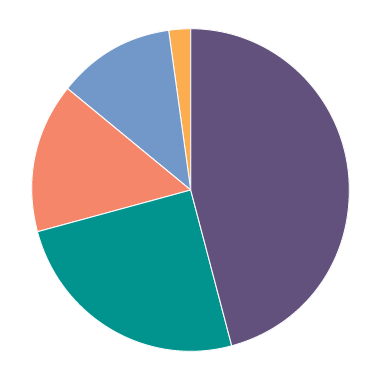The OBF Equity Toolkit provides practical lessons on how states, systems, and institutions work to address equity in the development and implementation of OBF policy. Broken into four Series focused on equity challenges in distinct phases of the OBF policy process, the Toolkit contains short, individual modules that focus on specific topics and provide lessons learned and recommendations for policymakers and institutional leaders to consider. Content is derived from in-depth study of six states (Tennessee, Indiana, Ohio, New Mexico, Oregon, and Kentucky) and 13 institutions in them. See the Research Methods section of the Overview for more information.
This research was conducted in coordination with the Center for Law and Social Policy (CLASP) and supported by a grant from the Bill & Melinda Gates Foundation. Opinions reflect those of the authors, not necessarily those of the Foundation.
Overview
Kentucky’s Performance Funding Model was signed into law in 2017. The Postsecondary Education Working Group led the design of two formulas, one for public universities, and one for the Kentucky Community and Technical College System. After deducting appropriations for legislatively mandated research and public service programs, debt service, and a small school adjustment, Kentucky’s funding model distributes 100% of funding for state postsecondary institutions based on outcomes: student success, course completion, and operational support. Student success metrics incentivize enrolling and retaining students from diverse backgrounds, full course loads, timely completion, and higher graduation rates, especially among low-income students, students of color, and in the two-year sector, underprepared students.
Quick facts about OBF in Kentucky
- Kentucky’s outcomes-based funding policy was championed by a range of stakeholders including Gary Ransdell, President of Western Kentucky University and Chair of the Postsecondary Education Working Group; Robert King, President of the Council on Postsecondary Education; State Senator David Givens; Governor Matt Bevin.
- Leaders from Kentucky’s public institutions were formally involved in the OBF workgroup. Kentucky’s work group was comprised of the president of the Kentucky Council on Postsecondary Education, the president of each public university, the president of the Kentucky Community and Technical College System, and representatives from the House, Senate, and Governor’s office. Staff from the Council on Postsecondary Education facilitated work group meetings and also met individually with officials at each campus to review the proposed model developed by members of the working group before it was finalized.[i] The work group’s report and consensus recommendations were codified in statute and signed into law by Governor Bevin on March 21, 2017.[ii] By statute, the work group will reconvene in 2020-21 and every three years thereafter to determine if adjustments in the model are warranted.
- Kentucky implemented OBF with a funding cut and pooled 5% of base funding into a redistribution fund. The enacted 2016-2018 Budget of the Commonwealth, HB 303, placed $42.9 million (transferred from campus operating budgets) in a Postsecondary Education Performance Fund. Kentucky State University was exempt from contributing to the fund.
Kentucky state context
Statewide demographics: 85% White – not Hispanic or Latino, 8% Black or African American, 0.3% American Indian and Alaska Native, 2% Asian, 0.1% Native Hawaiian and Other Pacific Islander, 2% Two or More Races, 4% Hispanic or Latino.[iii]
Governance structure: Two different systems of governance across the two-year and four-year systems.
-
Kentucky’s two-year sector is centralized. The Board of Regents for the Kentucky Community College and Technical Colleges System consists of 14 members who administer multiple campuses.[iv]
-
Kentucky’s four-year sector is decentralized. Each state-supported university has an individual governing board responsible for the institution.[v]
Coordinating/governing agency for postsecondary: The Council on Postsecondary Education is the coordinating agency for Kentucky’s state-supported universities and the Kentucky Community and Technical College System.[vi]
Kentucky’s Equity Challenge
Large attainment gaps exist in Kentucky. While total credentialed attainment in 2016 equaled 45%, attainment varies across race and ethnicity.[vii]
Table 1. The percent of Kentucky residents aged 25-64 with an associate degree, workforce-relevant certificate, or higher in 2016[viii]
There is ongoing work to desegregate higher education in Kentucky. Since a 1982 U.S. Department of Education’s Office for Civil Rights (OCR) finding that Kentucky was in violation of Title VI of the Civil Rights Act of 1964, CPE has overseen the Higher Education Desegregation Plan and its multiple iterations.[ix] The current plan, Kentucky Public Postsecondary Education Policy for Diversity, Equity and Inclusion, requires that colleges and universities create a diversity plan with measurable benchmarks focused on access, campus climate, and completion, and provides them with evaluation rubrics to track their progress.[x]
Kentucky made efforts to protect its HBCU during the transition to OBF. Because of historic funding inequities, Kentucky State University, Kentucky’s HBCU, was given a three year hold harmless to aid in transitioning to the new formula.
Kentucky’s previous approach to higher education funding led to funding inequity between institutions that was rebalanced during the transition to OBF. Kentucky previously used an incremental approach to funding institutions, re-awarding them their prior year’s funding regardless of enrollment changes. This led to institutions that experienced enrollment growth having a much lower per-FTE funding than others. Kentucky redistributed funds to rebalance funding, specifically awarding Northern Kentucky University $5 million in additional dollars to increase their FTE funding.
To protect small institutions in areas with declining populations, Kentucky added a small school adjustment to equalize base funding in each sector.

Outcomes-Based Funding Formula and Policy
Table 2. Timeline for adoption and implementation of OBF in Kentucky[xi],[xii],[xiii]

Current funding formula
For a detailed description of Kentucky’s OBF policy, see CPE’s website Performance Funding.[xiv]
Percent allocated through formula in FY19: 5% of funding in the first year, 100% of funding in following years.[xv],[xvi]
Data and outcomes calculated: Three-year rolling averages.
Equity metrics: Additional weighting for low-income, underprepared (two-year sector), and underrepresented minority students.
Table 3. Overview of FY18 Kentucky OBF formula[xvii]











